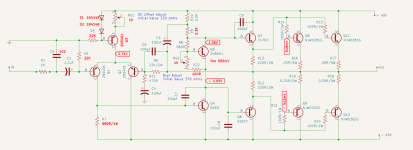Hello, My tweeter and mid-range distortion sound like a speaker cone that has cracked. That happens when the vocals or bass are loud. The high frequencies is dominating the amplifier. Should I change the C7 100pf to 47/22pf? by the way I don't have pre-amp I'm using TDA7439 audio processor. but I have also tried with direct audio input to amplifier, still got cracker sound. but it produce more crack sound when it goes by the audio processor because it enhance more.
Thanks.
Thanks.
Attachments
To diagnose correctly, the problem should be clear. 'Cracked' can mean a distorted sound, continuously; it can mean that at some intervals there is a cracking sound from the speakers, or anything in between. Those are very different things with very different causes and solutions.
Can you describe the effect a bit more clearly?
Jan
Can you describe the effect a bit more clearly?
Jan
C5 is in the wrong position. It should be in parallel with R2.
It may be that actual build is different but if like on schematics, there is a question how well TDA7439 tolerates capacitive load.
It may be that actual build is different but if like on schematics, there is a question how well TDA7439 tolerates capacitive load.
C5 should go. Even // R2 it would short most of the audio.
And R2 isn't needed anyway.
RV1 is a disaster waiting to happen.
Jan
And R2 isn't needed anyway.
RV1 is a disaster waiting to happen.
Jan
Last edited:
hi, I am also suspected that C5 in the wrong position but it is in the circuit board. the diagram I have drawn from the board and I made some changes which indicated in Red color. it had zener diod , changed it to LTP.
by the way, I tested TDA7439 to my AVR (Yamaha V763). sound is clear but gain is too low.
@jan.didden
Whats wrong with the VR1?
by the way, I tested TDA7439 to my AVR (Yamaha V763). sound is clear but gain is too low.
@jan.didden
Whats wrong with the VR1?
If C5 is in the board it is likely there's an error in re-drawing it.
As drawn, it shorts the incoming signal.
If VR1 is turned to one side the transistor(s) will release the magic smoke.
Jan
As drawn, it shorts the incoming signal.
If VR1 is turned to one side the transistor(s) will release the magic smoke.
Jan
Good decisions come from experience.
Experience comes from bad decisions 😎
I was hoping he would have thought about it, especially since it was applied at RV2.
Come this summer, offset will drift and then what?
Jan
Experience comes from bad decisions 😎
I was hoping he would have thought about it, especially since it was applied at RV2.
Come this summer, offset will drift and then what?
Jan
If offset drifts it drifts. It would still drift if you used fixed resistors instead of actually using a pot.
Besides, it’s not really an “offset adjust” pot. It actually fine tunes the differential balance which is set by the ratio of the resistors in the CCS emitter and the collector load if all the vbe’s are the same. The problem is they are not, which requires some way of trimming if you are trying to enforce differential balance without resorting to current mirrors. Strict balance is not required to get it to “work”, but it sounds better when it IS balanced. If you used a matched input pair, when the DC output is minimized the two currents should be balanced - which assumes there are no other sources of offset. A true offset adjust pot would apply a DC correction to one of the two inputs. And would be used to trim out even smaller errors than this was intended to.
Besides, it’s not really an “offset adjust” pot. It actually fine tunes the differential balance which is set by the ratio of the resistors in the CCS emitter and the collector load if all the vbe’s are the same. The problem is they are not, which requires some way of trimming if you are trying to enforce differential balance without resorting to current mirrors. Strict balance is not required to get it to “work”, but it sounds better when it IS balanced. If you used a matched input pair, when the DC output is minimized the two currents should be balanced - which assumes there are no other sources of offset. A true offset adjust pot would apply a DC correction to one of the two inputs. And would be used to trim out even smaller errors than this was intended to.
hello, When I was younger, I used to visit music stores to purchase cassettes or record songs from LPs. Surprisingly, I would see the deck set and assume that only wealthy people could use that equipment.
When I was a college student in the 1990s, I took the initiative to build a HiFi! I moved away from home in 1999 to pursue a job and further my education in the capital city, and as time went on, I lost interest in electricity. Twenty years later, I decided to update the system, and this is it.
The recorder for cassettes is broken. I only keep it as a reminder of the 90s.
Thanks.
When I was a college student in the 1990s, I took the initiative to build a HiFi! I moved away from home in 1999 to pursue a job and further my education in the capital city, and as time went on, I lost interest in electricity. Twenty years later, I decided to update the system, and this is it.
The recorder for cassettes is broken. I only keep it as a reminder of the 90s.
Thanks.
Attachments
-
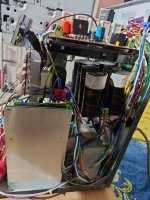 DSC_0054.JPG301.4 KB · Views: 78
DSC_0054.JPG301.4 KB · Views: 78 -
 DSC_0053.JPG380 KB · Views: 77
DSC_0053.JPG380 KB · Views: 77 -
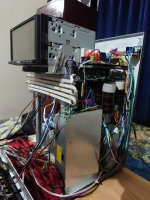 DSC_0052.JPG298 KB · Views: 73
DSC_0052.JPG298 KB · Views: 73 -
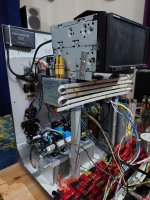 DSC_0051.JPG308.3 KB · Views: 86
DSC_0051.JPG308.3 KB · Views: 86 -
 DSC_0050.JPG313.9 KB · Views: 92
DSC_0050.JPG313.9 KB · Views: 92 -
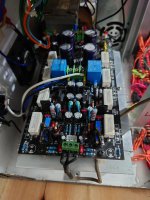 DSC_0049.JPG289.3 KB · Views: 76
DSC_0049.JPG289.3 KB · Views: 76 -
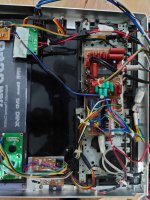 DSC_0048.JPG325.2 KB · Views: 72
DSC_0048.JPG325.2 KB · Views: 72 -
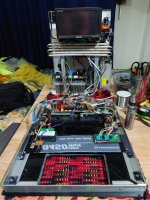 DSC_0047.JPG338.5 KB · Views: 65
DSC_0047.JPG338.5 KB · Views: 65 -
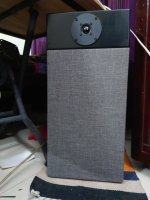 DSC_0058.JPG241 KB · Views: 67
DSC_0058.JPG241 KB · Views: 67 -
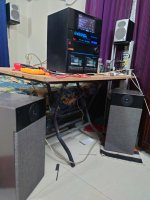 DSC_0056.JPG274.8 KB · Views: 66
DSC_0056.JPG274.8 KB · Views: 66 -
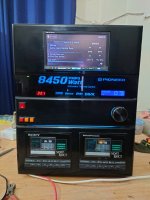 DSC_0057.JPG257.6 KB · Views: 59
DSC_0057.JPG257.6 KB · Views: 59 -
 amp1996.jpg277.3 KB · Views: 73
amp1996.jpg277.3 KB · Views: 73 -
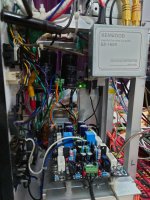 DSC_0055.JPG302.7 KB · Views: 73
DSC_0055.JPG302.7 KB · Views: 73
Wow! That's enough stuff to build a small nuclear reactor! ;-)
Jan
Jan
You kept the memory alive!
That is really something to be proud of, that you cherish and enjoy that hard earned gear.
Thanks for sharing.
Hugo
That is really something to be proud of, that you cherish and enjoy that hard earned gear.
Thanks for sharing.
Hugo
- Home
- Amplifiers
- Solid State
- Cracked Sound!!


